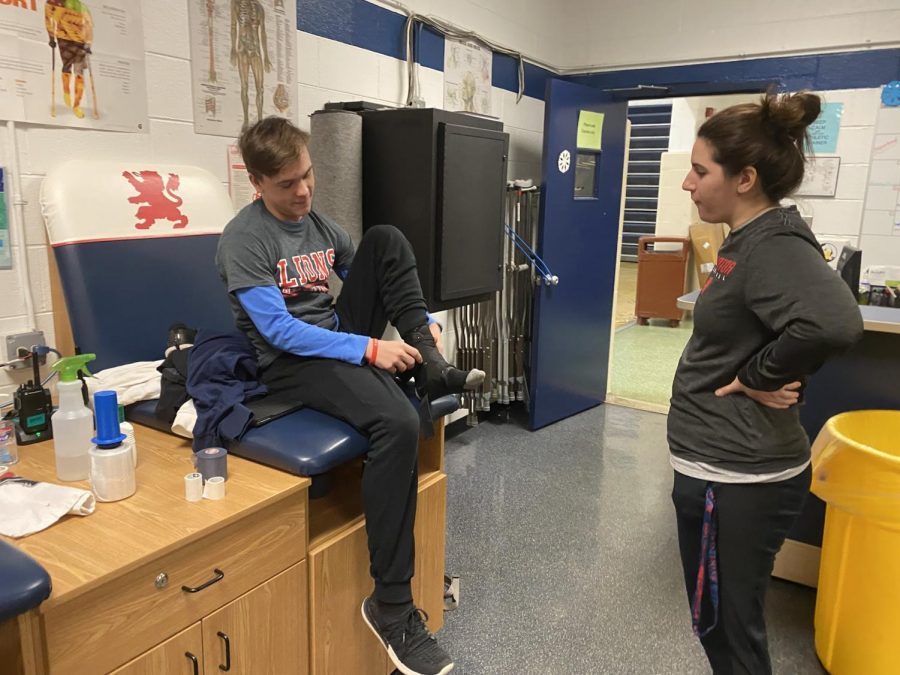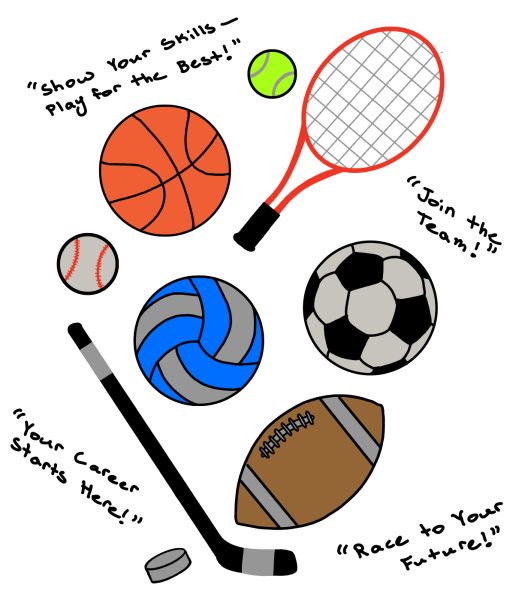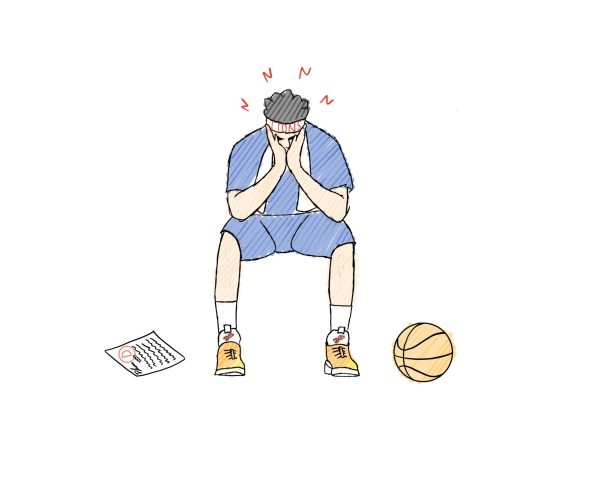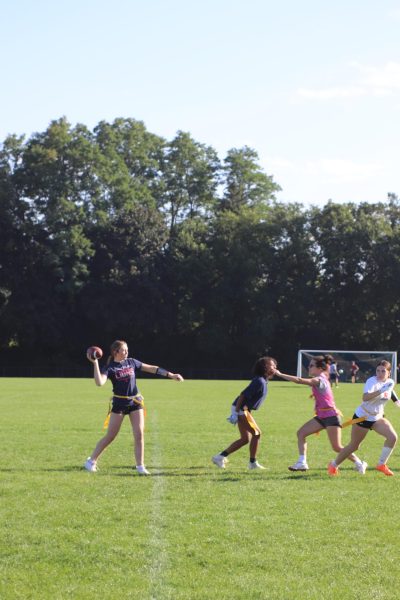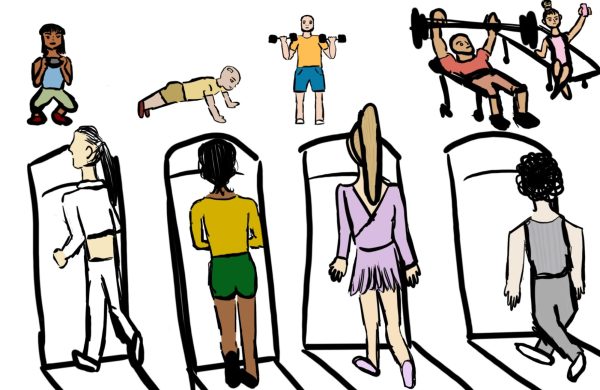Weighing risk factor of sports
At what point do athletics become too dangerous?
Freshman Tyler Bielfeldt works in the athletic training room with Coach Gina Garro.
Sports can provide many things to athletes. Athletics are an opportunity to socialize and build friendships. They provide a way to stay healthy and active and teach valuable life lessons that are applicable in and out of a game. However, sports also can bring risk to every athlete.
“You can get injured in every sport,” said sophomore Jack Streck. “Just by being active you put your body at risk. Even in low impact sports you can still pull a muscle or something like that.”
Although all sports entail some level of risk, some provide unnecessary danger to the athletes involved. Competition and drive to succeed are main causes for sports such as cheer, where stunts are involved.
“I do think [cheer] does some stunts that are…dangerous,” said sophomore Katie Klein. “Especially in competitions because the higher the difficulty, the more points you can get which leads to a higher score and winning.”
An increase in risk and lack of preparation leads to injuries within sports which can be avoided.
“I am a base, so it’s my job to get the flyer up in the air, keep her in the air, and to also keep her safe,” said Klein. “My stunt group was doing a stunt, and all of a sudden I just saw the flyer coming down fast. I knew it was my job to not let her hit the ground, so as she was coming down, I caught her, but I ended up hitting the back of my head on the floor pretty hard [since] she was high up.”
Athletes can worsen their injuries when they fail to address the possibility of an injury due to pressure to support their team.
“I didn’t think of getting a concussion was a possibility,” said Klein. “I kept practicing, which worsened it, because I didn’t want to let my team down knowing we had a pep rally coming up.”
In most aspects, coaches, trainers and athletes work to avoid injuries. For example, coaches and athletes work to avoid injuries through stretching and warm ups. Athletic trainers also offer advice and help for student athletes to avoid injuries and stay healthy.
“Nutrition is key to avoiding injury,” said athletic trainer Mary Polley. “Another way to prevent injuries is a long good warm up. We also have pre-hab, as opposed to rehab. Gina [Garro] is here during lunch periods so athletes can finish before their practice.”
Although faculty and coaches work to keep students safe, some unsafe practices continue in sports. A major one is weight loss for wrestling.
“In wrestling people work to lose weight to wrestle in a certain weight class,” said Streck.
The decision to lose weight is on the athletes, not one the coaches, however.
“I was going to wrestle at a certain weight class for varsity sectionals, but then someone else in that weight class got the spot,” said Streck. “I made the decision that I wanted to try and drop my weight down to the lower weight class that was 195. I was in the 220 weight class previously. At the time, I [weighed] about 209.5 so I had a great amount of weight to lose, but I was full from lunch and had a lot of water that day, so I had a lot of weight that I could quickly and easily shed. [My coaches] told me that I didn’t have to [go through with it], but I persisted and they let me. I dropped almost all of the weight [through sweating] and got rid of a lot of the water weight, and when I went to weigh-ins I was only 0.5 pounds off of 197 to get into the weight class, because we had 2 pounds of leeway that day.”
The coach works with the athletes to lose weight, but always ensure their safety as their first priority.
“My coach was aware that I was doing this because I had told him that I really wanted to get down to this new weight class,” said Streck. “My coach kept me safe by [noticing if] I was overdoing it and didn’t seem well when weigh-ins began. Then, even if I made the weight, he wouldn’t let me wrestle.”
Although this practice is dangerous, it is the athlete’s choice rather than that of the coach. Athletes must decide for themselves how to stay safe or put themselves at risk, and what they are willing to risk for the sake of their sport.
Your donation will support the student journalists of Saint Viator High School. Your contribution will allow us to purchase equipment and cover our annual website hosting costs.



